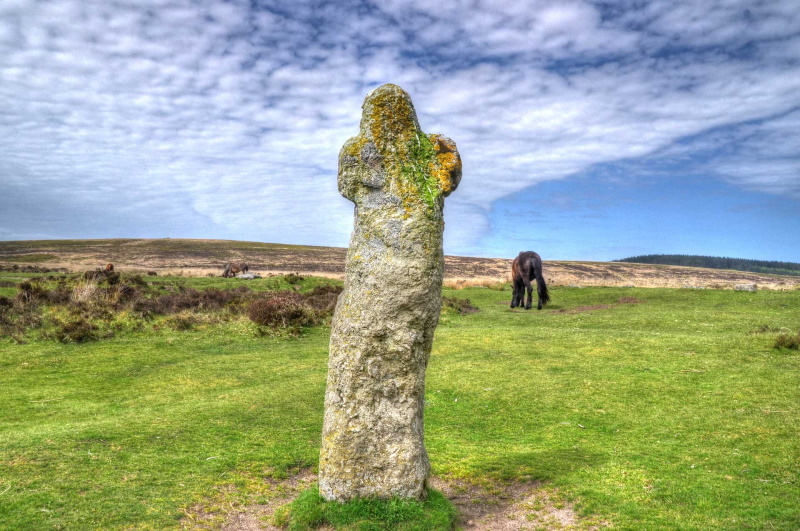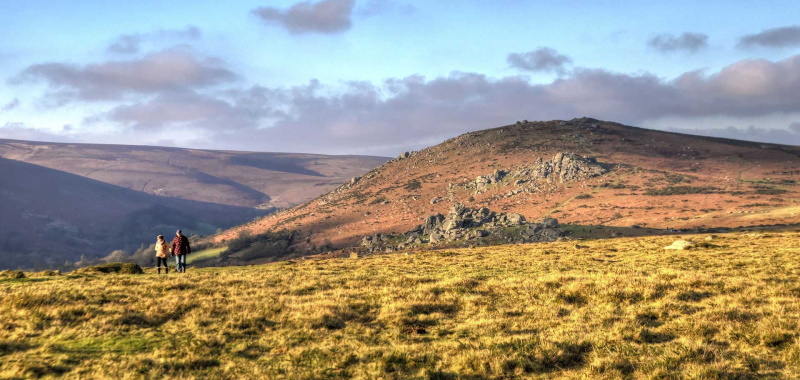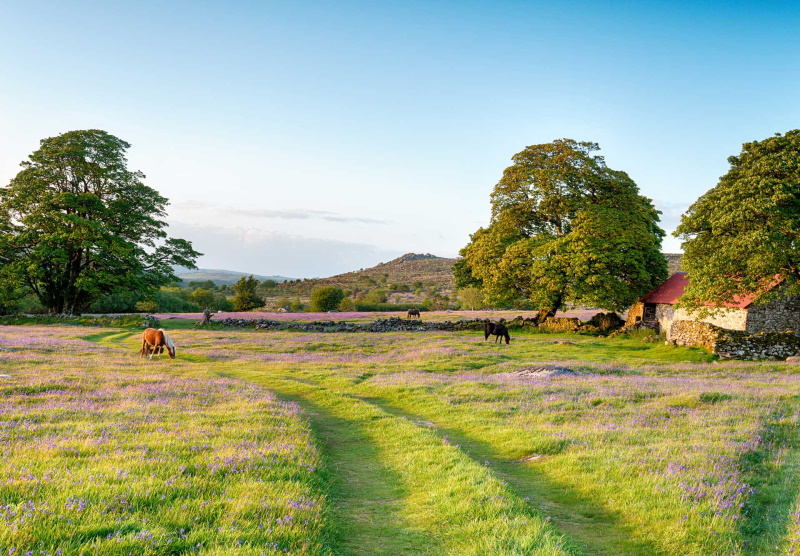2021 is the 70th anniversary of the designation of Dartmoor as one of UK's first National Parks, on 30 October 1951. Dartmoor was one of the first places to be designated as a National Park; the Peak District, Lake District and Snowdonia were also awarded the designation in the same year.
History and archaeology
When you look out across Dartmoor’s high moorland and wild spaces, it is hard to believe that you are looking at a landscape that has been managed for over six thousand years. Dartmoor’s first occupants were hunter-gatherers and all over the moor you can find archaeological evidence of man’s occupation of the land, from the first ancient hunting communities, all the way through to today’s hill farmers and visitors. It is this sense of history that makes Dartmoor such an exciting and interesting place to explore, with a truly fascinating timeline.

Walking
There are lots of ways to explore and enjoy Dartmoor, whether on foot, by bike or on the back of a horse; but by far the most popular is by walking. We have found that circular walks are the most well-loved, so we have a large number for you to choose from here.

Dartmoor folklore
For centuries the Dartmoor folklore and legends have encompassed tales of pixies, ghosts and witchcraft.There can be no question that Dartmoor and its landscape has helped fire people’s beliefs and imagination. From the thick mists that suddenly appear and roll across the moor to the dark, bottomless mires and the craggy granite tors, each lends an air of mystery and magic, all ripe for associated legends and tales.
The remarkable thing is that due to Dartmoor’s unspoilt landscape it is possible to visit many of the places which are connected with the various tales and see them as they were when their events unfolded, we list many of them here!
Dartmoor’s ponies
For many people the thought seeing the free-living herds of Dartmoor ponies is what brings them to visit the moor. Arguably the landscape’s most hardy animal, it has become the official symbol on the Dartmoor National Park’s logo. They’ve lived on the moor for centuries, thriving despite harsh winter weather; there are records going back to 1012 AD acknowledging their presence and footprints being discovered that date back 3,500 years!

The Moor Otters Arts Trail
The Moor Otters Arts Trail launches on Dartmoor on 28th May 2021! 81 stunning sculptures of otters with cubs – all designed and decorated by local and national artists – will have ‘holiday homes’ with businesses, community groups and in public areas across Dartmoor, in Plymouth and in gateway towns and villages. Click here to find out more.
Moor Otters is a feel-good public arts project that gathers up young and old for an amazing journey of learning and discovery, creating stories and making memories.
Take care
Please be aware that Dartmoor is home to many types of wildlife and livestock, so when you are enjoying your walk be careful not to disturb, approach, touch or feed any of them. Plenty of simple advice can be found here.
You can read much more about visiting Dartmoor in our Discover Dartmoor online guide
Above all, have fun and enjoy it! Dartmoor is a magical, restorative, peaceful and extraordinarily beautiful place to be.
Visit Dartmoor, the Official Tourism Organisation – www.visitdartmoor.co.uk
.jpg)
Related
Comments
Comments are disabled for this post.



 to add an item to your Itinerary basket.
to add an item to your Itinerary basket.





